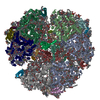+ Open data
Open data
- Basic information
Basic information
| Entry | Database: PDB / ID: 8asl | ||||||||||||||||||
|---|---|---|---|---|---|---|---|---|---|---|---|---|---|---|---|---|---|---|---|
| Title | RCII/PSI complex, class 2 | ||||||||||||||||||
 Components Components |
| ||||||||||||||||||
 Keywords Keywords | PHOTOSYNTHESIS / photosystem / assembly factor / membrane protein | ||||||||||||||||||
| Function / homology |  Function and homology information Function and homology informationplasma membrane-derived thylakoid photosystem II / thylakoid lumen / photosystem II assembly / oxygen evolving activity / photosystem II reaction center / photosystem II / photosystem I reaction center / photosystem I / photosynthetic electron transport in photosystem I / oxidoreductase activity, acting on diphenols and related substances as donors, oxygen as acceptor ...plasma membrane-derived thylakoid photosystem II / thylakoid lumen / photosystem II assembly / oxygen evolving activity / photosystem II reaction center / photosystem II / photosystem I reaction center / photosystem I / photosynthetic electron transport in photosystem I / oxidoreductase activity, acting on diphenols and related substances as donors, oxygen as acceptor / photosynthetic electron transport chain / photosystem I / photosystem II / response to herbicide / : / plasma membrane-derived thylakoid membrane / chlorophyll binding / photosynthetic electron transport in photosystem II / photosynthesis / 4 iron, 4 sulfur cluster binding / oxidoreductase activity / electron transfer activity / iron ion binding / heme binding / magnesium ion binding / metal ion binding / identical protein binding / plasma membrane Similarity search - Function | ||||||||||||||||||
| Biological species |  | ||||||||||||||||||
| Method | ELECTRON MICROSCOPY / single particle reconstruction / cryo EM / Resolution: 3.15 Å | ||||||||||||||||||
 Authors Authors | Zhao, Z. / Vercellino, I. / Knoppova, J. / Sobotka, R. / Murray, J.W. / Nixon, P.J. / Sazanov, L.A. / Komenda, J. | ||||||||||||||||||
| Funding support |  United Kingdom, European Union, United Kingdom, European Union,  Czech Republic, 5items Czech Republic, 5items
| ||||||||||||||||||
 Citation Citation |  Journal: Nat Commun / Year: 2023 Journal: Nat Commun / Year: 2023Title: The Ycf48 accessory factor occupies the site of the oxygen-evolving manganese cluster during photosystem II biogenesis. Authors: Ziyu Zhao / Irene Vercellino / Jana Knoppová / Roman Sobotka / James W Murray / Peter J Nixon / Leonid A Sazanov / Josef Komenda /     Abstract: Robust oxygenic photosynthesis requires a suite of accessory factors to ensure efficient assembly and repair of the oxygen-evolving photosystem two (PSII) complex. The highly conserved Ycf48 assembly ...Robust oxygenic photosynthesis requires a suite of accessory factors to ensure efficient assembly and repair of the oxygen-evolving photosystem two (PSII) complex. The highly conserved Ycf48 assembly factor binds to the newly synthesized D1 reaction center polypeptide and promotes the initial steps of PSII assembly, but its binding site is unclear. Here we use cryo-electron microscopy to determine the structure of a cyanobacterial PSII D1/D2 reaction center assembly complex with Ycf48 attached. Ycf48, a 7-bladed beta propeller, binds to the amino-acid residues of D1 that ultimately ligate the water-oxidising MnCaO cluster, thereby preventing the premature binding of Mn and Ca ions and protecting the site from damage. Interactions with D2 help explain how Ycf48 promotes assembly of the D1/D2 complex. Overall, our work provides valuable insights into the early stages of PSII assembly and the structural changes that create the binding site for the MnCaO cluster. | ||||||||||||||||||
| History |
|
- Structure visualization
Structure visualization
| Structure viewer | Molecule:  Molmil Molmil Jmol/JSmol Jmol/JSmol |
|---|
- Downloads & links
Downloads & links
- Download
Download
| PDBx/mmCIF format |  8asl.cif.gz 8asl.cif.gz | 827.2 KB | Display |  PDBx/mmCIF format PDBx/mmCIF format |
|---|---|---|---|---|
| PDB format |  pdb8asl.ent.gz pdb8asl.ent.gz | 704.8 KB | Display |  PDB format PDB format |
| PDBx/mmJSON format |  8asl.json.gz 8asl.json.gz | Tree view |  PDBx/mmJSON format PDBx/mmJSON format | |
| Others |  Other downloads Other downloads |
-Validation report
| Summary document |  8asl_validation.pdf.gz 8asl_validation.pdf.gz | 9.6 MB | Display |  wwPDB validaton report wwPDB validaton report |
|---|---|---|---|---|
| Full document |  8asl_full_validation.pdf.gz 8asl_full_validation.pdf.gz | 9.9 MB | Display | |
| Data in XML |  8asl_validation.xml.gz 8asl_validation.xml.gz | 152.5 KB | Display | |
| Data in CIF |  8asl_validation.cif.gz 8asl_validation.cif.gz | 204.7 KB | Display | |
| Arichive directory |  https://data.pdbj.org/pub/pdb/validation_reports/as/8asl https://data.pdbj.org/pub/pdb/validation_reports/as/8asl ftp://data.pdbj.org/pub/pdb/validation_reports/as/8asl ftp://data.pdbj.org/pub/pdb/validation_reports/as/8asl | HTTPS FTP |
-Related structure data
| Related structure data |  15618MC 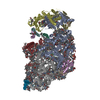 8am5C 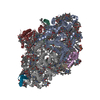 8aspC C: citing same article ( M: map data used to model this data |
|---|---|
| Similar structure data | Similarity search - Function & homology  F&H Search F&H Search |
- Links
Links
- Assembly
Assembly
| Deposited unit | 
|
|---|---|
| 1 |
|
- Components
Components
-Photosystem I P700 chlorophyll a apoprotein ... , 2 types, 2 molecules ab
| #1: Protein | Mass: 83036.398 Da / Num. of mol.: 1 Source method: isolated from a genetically manipulated source Details: PsaA / Source: (gene. exp.)   |
|---|---|
| #2: Protein | Mass: 81369.531 Da / Num. of mol.: 1 Source method: isolated from a genetically manipulated source Details: PsaB / Source: (gene. exp.)   |
-Photosystem I reaction center subunit ... , 8 types, 8 molecules defijklm
| #4: Protein | Mass: 15663.749 Da / Num. of mol.: 1 Source method: isolated from a genetically manipulated source Source: (gene. exp.)   |
|---|---|
| #5: Protein | Mass: 8154.086 Da / Num. of mol.: 1 Source method: isolated from a genetically manipulated source Source: (gene. exp.)   |
| #6: Protein | Mass: 18267.082 Da / Num. of mol.: 1 Source method: isolated from a genetically manipulated source Source: (gene. exp.)   |
| #7: Protein/peptide | Mass: 4414.148 Da / Num. of mol.: 1 Source method: isolated from a genetically manipulated source Source: (gene. exp.)   |
| #8: Protein/peptide | Mass: 4535.415 Da / Num. of mol.: 1 Source method: isolated from a genetically manipulated source Source: (gene. exp.)   |
| #9: Protein | Mass: 8649.268 Da / Num. of mol.: 1 Source method: isolated from a genetically manipulated source Source: (gene. exp.)   |
| #10: Protein | Mass: 16631.795 Da / Num. of mol.: 1 Source method: isolated from a genetically manipulated source Source: (gene. exp.)   |
| #11: Protein/peptide | Mass: 3382.063 Da / Num. of mol.: 1 Source method: isolated from a genetically manipulated source Source: (gene. exp.)   |
-Photosystem II ... , 4 types, 4 molecules ADIS
| #12: Protein | Mass: 38280.531 Da / Num. of mol.: 1 Source method: isolated from a genetically manipulated source Source: (gene. exp.)   |
|---|---|
| #13: Protein | Mass: 37816.359 Da / Num. of mol.: 1 Source method: isolated from a genetically manipulated source Source: (gene. exp.)   |
| #16: Protein/peptide | Mass: 4310.109 Da / Num. of mol.: 1 Source method: isolated from a genetically manipulated source Source: (gene. exp.)   |
| #17: Protein | Mass: 37321.719 Da / Num. of mol.: 1 Source method: isolated from a genetically manipulated source Source: (gene. exp.)   |
-Cytochrome b559 subunit ... , 2 types, 2 molecules EF
| #14: Protein | Mass: 9454.577 Da / Num. of mol.: 1 Source method: isolated from a genetically manipulated source Source: (gene. exp.)   |
|---|---|
| #15: Protein/peptide | Mass: 4935.784 Da / Num. of mol.: 1 Source method: isolated from a genetically manipulated source Source: (gene. exp.)   |
-Protein / Sugars , 2 types, 2 molecules c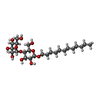

| #29: Sugar | ChemComp-LMT / |
|---|---|
| #3: Protein | Mass: 8837.261 Da / Num. of mol.: 1 Source method: isolated from a genetically manipulated source Source: (gene. exp.)   |
-Non-polymers , 14 types, 144 molecules 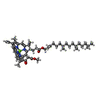

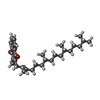








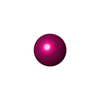















| #18: Chemical | ChemComp-CL0 / | ||||||||||||||||||||||||
|---|---|---|---|---|---|---|---|---|---|---|---|---|---|---|---|---|---|---|---|---|---|---|---|---|---|
| #19: Chemical | ChemComp-CLA / #20: Chemical | #21: Chemical | ChemComp-BCR / #22: Chemical | ChemComp-LHG / #23: Chemical | ChemComp-LMG / #24: Chemical | ChemComp-45D / | #25: Chemical | #26: Chemical | #27: Chemical | ChemComp-EQ3 / ( | #28: Chemical | #30: Chemical | ChemComp-FE2 / | #31: Chemical | #32: Chemical | ChemComp-HEM / | |
-Details
| Has ligand of interest | Y |
|---|---|
| Has protein modification | Y |
-Experimental details
-Experiment
| Experiment | Method: ELECTRON MICROSCOPY |
|---|---|
| EM experiment | Aggregation state: PARTICLE / 3D reconstruction method: single particle reconstruction |
- Sample preparation
Sample preparation
| Component | Name: RCII/PSI complex class 2 / Type: COMPLEX / Entity ID: #4-#5, #14, #16-#17 / Source: RECOMBINANT |
|---|---|
| Molecular weight | Experimental value: NO |
| Source (natural) | Organism:  |
| Source (recombinant) | Organism:  |
| Buffer solution | pH: 6.5 |
| Specimen | Conc.: 0.2 mg/ml / Embedding applied: NO / Shadowing applied: NO / Staining applied: NO / Vitrification applied: YES |
| Specimen support | Grid material: COPPER / Grid mesh size: 300 divisions/in. / Grid type: Quantifoil R0.6/1 |
| Vitrification | Instrument: FEI VITROBOT MARK IV / Cryogen name: ETHANE / Humidity: 100 % / Chamber temperature: 277 K |
- Electron microscopy imaging
Electron microscopy imaging
| Microscopy | Model: TFS GLACIOS |
|---|---|
| Electron gun | Electron source:  FIELD EMISSION GUN / Accelerating voltage: 200 kV / Illumination mode: FLOOD BEAM FIELD EMISSION GUN / Accelerating voltage: 200 kV / Illumination mode: FLOOD BEAM |
| Electron lens | Mode: BRIGHT FIELD / Nominal magnification: 120000 X / Nominal defocus max: 2500 nm / Nominal defocus min: 1500 nm / Calibrated defocus min: 1000 nm / Calibrated defocus max: 3000 nm / Cs: 2.7 mm / C2 aperture diameter: 50 µm / Alignment procedure: COMA FREE |
| Specimen holder | Cryogen: NITROGEN / Specimen holder model: FEI TITAN KRIOS AUTOGRID HOLDER |
| Image recording | Electron dose: 90.9 e/Å2 / Detector mode: INTEGRATING / Film or detector model: FEI FALCON III (4k x 4k) / Num. of grids imaged: 1 / Num. of real images: 2853 |
- Processing
Processing
| Software | Name: PHENIX / Version: 1.20.1_4487: / Classification: refinement | ||||||||||||||||||||||||||||||||||||||||||||||||||||||||||||||||||||||||||||||||||||||||||||||||||||||
|---|---|---|---|---|---|---|---|---|---|---|---|---|---|---|---|---|---|---|---|---|---|---|---|---|---|---|---|---|---|---|---|---|---|---|---|---|---|---|---|---|---|---|---|---|---|---|---|---|---|---|---|---|---|---|---|---|---|---|---|---|---|---|---|---|---|---|---|---|---|---|---|---|---|---|---|---|---|---|---|---|---|---|---|---|---|---|---|---|---|---|---|---|---|---|---|---|---|---|---|---|---|---|---|
| EM software |
| ||||||||||||||||||||||||||||||||||||||||||||||||||||||||||||||||||||||||||||||||||||||||||||||||||||||
| CTF correction | Type: PHASE FLIPPING AND AMPLITUDE CORRECTION | ||||||||||||||||||||||||||||||||||||||||||||||||||||||||||||||||||||||||||||||||||||||||||||||||||||||
| Particle selection | Num. of particles selected: 1250000 | ||||||||||||||||||||||||||||||||||||||||||||||||||||||||||||||||||||||||||||||||||||||||||||||||||||||
| Symmetry | Point symmetry: C1 (asymmetric) | ||||||||||||||||||||||||||||||||||||||||||||||||||||||||||||||||||||||||||||||||||||||||||||||||||||||
| 3D reconstruction | Resolution: 3.15 Å / Resolution method: FSC 0.143 CUT-OFF / Num. of particles: 178513 / Algorithm: FOURIER SPACE / Num. of class averages: 3 / Symmetry type: POINT | ||||||||||||||||||||||||||||||||||||||||||||||||||||||||||||||||||||||||||||||||||||||||||||||||||||||
| Atomic model building | Protocol: OTHER / Space: REAL / Target criteria: Correlation coefficient | ||||||||||||||||||||||||||||||||||||||||||||||||||||||||||||||||||||||||||||||||||||||||||||||||||||||
| Atomic model building | 3D fitting-ID: 1 / Source name: PDB / Type: experimental model
| ||||||||||||||||||||||||||||||||||||||||||||||||||||||||||||||||||||||||||||||||||||||||||||||||||||||
| Refine LS restraints |
|
 Movie
Movie Controller
Controller





 PDBj
PDBj




























